Forages for Reduced Nitrate Leaching, Grant and Jan Early (Canterbury)
9 min read
Grant and Jan Early from Mayfield are dairy farmers who made notable changes to their farming methods after joining the FRNL programme. Initially, their farm had 375 ha for milking and supported 3.9 cows/ha. Since participating, they've incorporated plantain in their grass regime, included fodder beet as a crop, and reduced their stocking rate to 3.8 cows/ha. These changes led to a 13% reduction in purchased nitrogen and a 10% reduction in estimated nitrogen leaching over several seasons. The programme helped them understand nutrient leaching impacts and allowed them to network with peers and scientists. It's vital for addressing environmental concerns in the dairy industry.
Grant and Jan Early are dairy farmers from Mayfield.
The dairy farm has an effective milking platform area of 375 ha. At the start of the programme this was 90% irrigated, at a stocking rate of 3.9 cows/ha and had a 550 ha dryland support block providing winter grazing (kale) and grain for the dairy.
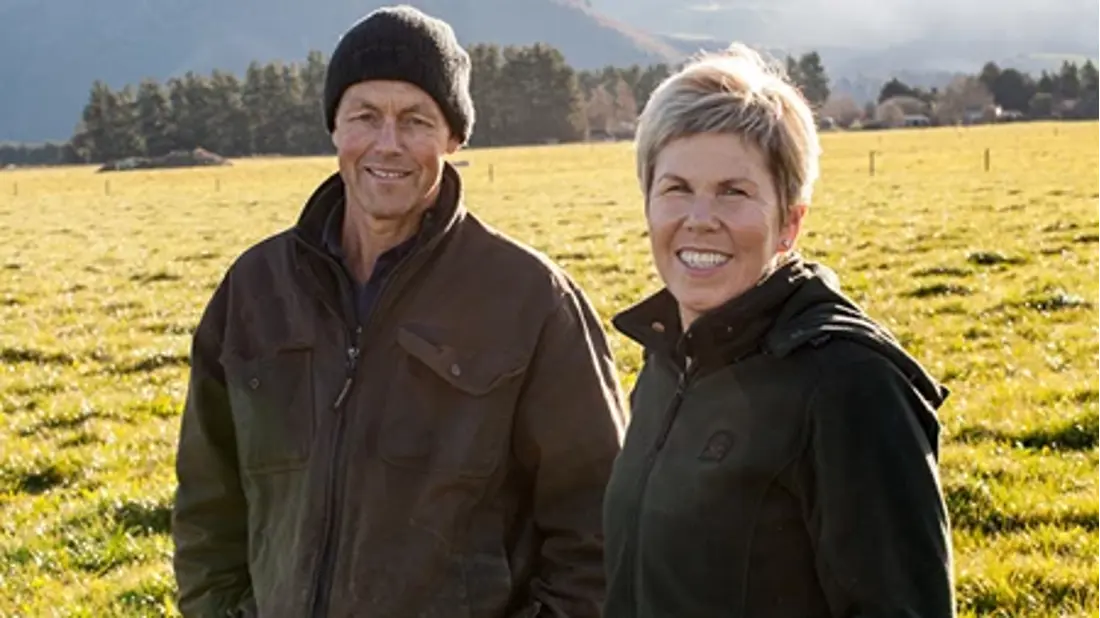
Since being involved in the FRNL programme, the Earlys have:
This has resulted in a decrease in purchased nitrogen (N) surplus of 13% and estimated N leaching of 10% between 2014/15 and 2018/19 seasons.
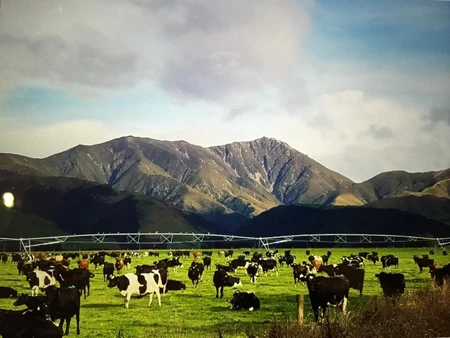
Area:
375 ha effective milking platform
Dominant soil:
Ruapuna stony silty loam
Average rainfall:
approx. 800 mm
Crops grown on the milking platform:
fodder beet followed by catch crop of annual rye or oats
Supplements fed:
2.7-3.4 t DM/ha
Cow numbers:
1401-1479 peak milked
Production:
1687-1821 kg MS/ha, 445-483 kg MS/cow
Support block:
previously had 550 ha of dryland support.
Support block (irrigated land):
Decreased to 250 ha
Support block (leased land):
(72 ha fodder beet, 72 ha barley, 98 ha short rotation ryegrass) by returning 250 ha
Pasture eaten:
15.1-16 t DM/ha
Trading as:
Ruapuna Farms Limited
Nutrient management is going to affect everyone. The sooner we have some tested solutions on how we can mitigate nitrate leaching, while still farming profitably, the better it will be for the industry as a whole. It’s our way of learning more ourselves as well as helping the industry in a small way.
The programme is important because whether we like it or not, the industry needs to come up with answers to deal with some environmental issues.
We see the monitor farms as a way of integrating experimental and modelling work and applying it at a whole working farm level. Hopefully the results will engage farmers at a grass roots level and get them thinking about how different options could fit into their own farming business.
Grant Early discusses winter cropping followed by catch crops.
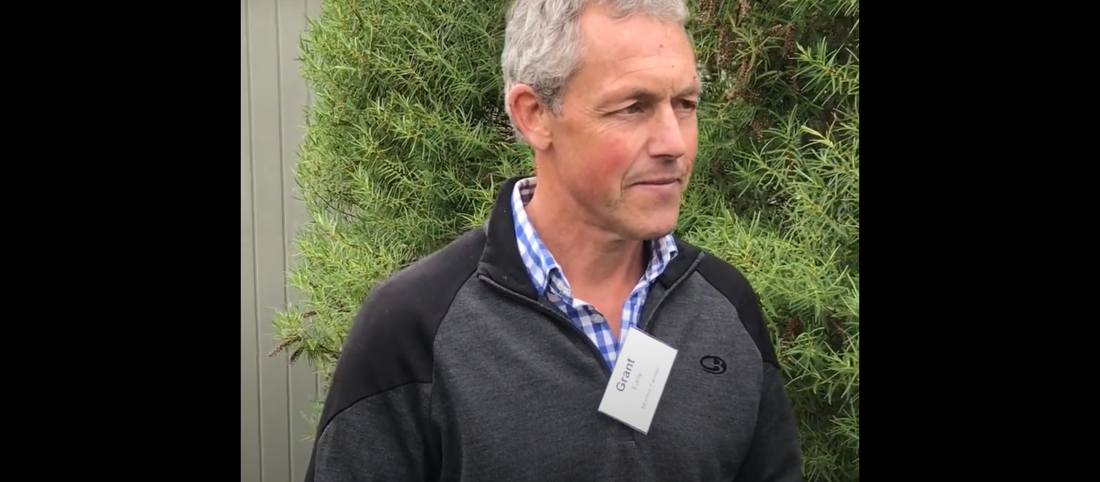
2015/16
Reducing costs through focusing on pasture, reducing imported supplement and establishing plantain in a mixed sward.
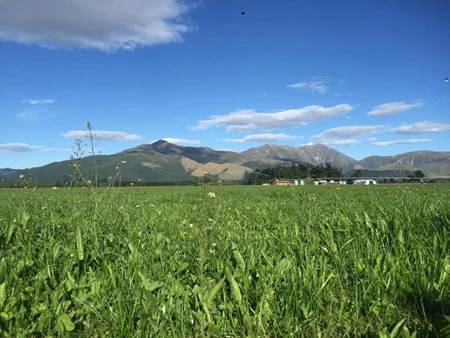
The focus for this season was to reduce costs in response to the low milk price, with similar number of cows and amount of N fertiliser as the 2014/15 season. This was achieved by:
The result was a similar level of production between 2014/15 and 2015/16 (1754 kg MS/ha and 1766 kg MS/ha, respectively) while farm working expenses decreased from $3.25/kg MS to $3.11/kg MS.
There was a reduction in purchased N surplus, and N use efficiency stayed the same. However, N leached per hectare increased by 9%. This is because Overseer assumes:
During the 2015/16 season, diverse pasture including plantain was established on the farm as part of the re-grassing programme. This totalled 21 ha over three paddocks (5.6% of the milking platform). Kale was grazed on adjacent paddocks in a support block as a supplement to help extend the rotation in autumn.
2016/17
Growing fodder beet on the platform for autumn feed, reducing imported supplement and continuing to establish plantain as part of a mixed sward.
During the 2016/17 season the most significant change was growing fodder beet on the milking platform for autumn feed (April/May) to extend the grazing rotation and start transitioning for wintering on fodder beet.
Plantain continued to be established as part of a mixture, with another two paddocks (16 ha) sown in 2016/17.
Compared to the previous two seasons, the 2016/17 season saw a reduction in N leaching, as estimated by Overseer, as well as a reduction in purchased N surplus.
Fodder beet
Management key messages
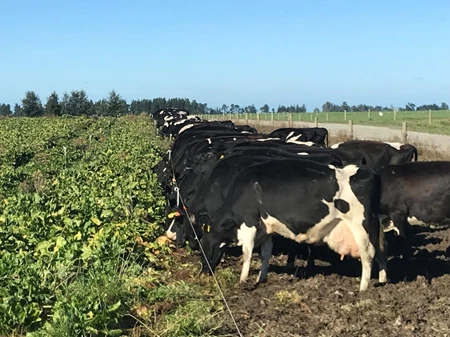
Plantain
Plantain establishment trial
It will be difficult to achieve the levels of plantain needed to reduce N leaching through pasture renewal alone. A trial was run to investigate the cost-effectiveness of different methods of establishing plantain into existing pastures on the Earlys farm and two other monitor farms.
Better success was seen with direct drilling in late December on one of the other monitor farms.
In 2017/18 the Earlys will try direct drilling in December at two sowing rates (4 kg/ha and 8 kg/ha).
Support block
A system change was implemented on the support block during 2016/17.
2017/18
Introducing catch crop, reducing area of fodder beet and continuing to establish plantain as part of a mixed sward.
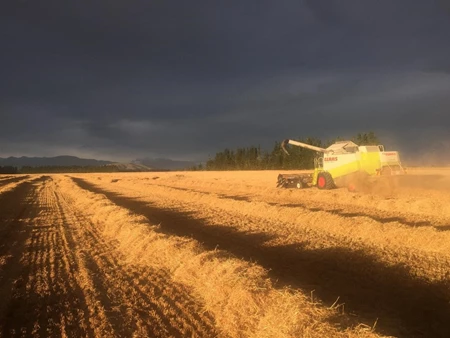
A catch crop of oats was grown following last autumn’s fodder beet and this was harvested in October. The area of fodder beet established on the platform was reduced to 8.8 ha (one paddock). However, this proved logistically challenging for grazing three herds.
Plantain continued to be established as part of a mixture through regrassing, with another five paddocks (32.3 ha) sown in 2017/18. Establishing plantain into existing pastures was tested using coated and bare seeds. Establishment was the same.
N fertiliser use was increased from 269 kg N/ha to 306 kg N/ha, particularly from February. Fast rotation lengths resulted in more applications and compromised regrowth, which resulted in an increased N fertiliser rate in an attempt to restore growth. This led to an increase in purchased N surplus and N leaching.
Catch crop trial
A catch crop trial was carried out where a catch crop of oats was sown immediately after the fodder beet was finished being grazed (mid-June). Fallow areas were left to allow a soil mineral N comparison with areas where the catch-crop had been sown.
2018/19
Following winter grazing on the support block, spring barley was established. Prior to the cows arriving for winter grazing the Early’s permanently split their 8 ha fodder beet paddocks in half and fed off length wise to give access to water troughs. This resulted in earlier access to eaten fodder beet ground and earlier establishment of catch crops (spring Barley). Barley crops were successfully established in June and July.
On the milking platform last autumn’s fodder beet was followed by a catch crop of Italian ryegrass. Fodder beet for autumn was established in two half paddocks (8 ha total) to overcome last season’s logistical challenges.
Plantain continued to be established as part of a mixture through regrassing, with another three paddocks (21.6 ha) sown in 2018/19.
N fertiliser use was reduced to 248 kg N/ha which resulted in a lower purchased N surplus and N leaching.
What are we doing now?
1. Continued use of plantain in regrassing programme (10% of platform annually)
2. Focus on increasing grass harvested to reduce purchased supplements
3. Fodder Beet
4. Catch Crops
5. Nitrogen – focus on reducing fertiliser N
6. Start destocking cull cows in early April
*The FRNL monitor farms were required to collect data on a daily basis. While this was quite a task, it has given us some incredibly useful and creditable data that has been instrumental in managing and analysing our business.
I think our biggest learning has been an understanding of the nitrogen cycle and the simple nitrogen surplus calculation* (i.e. less nitrogen in, less nitrogen out) and the levers we can change/manage to effect that.
Being part of a collaborative project has been rewarding with regards to access to recent science, networking with researchers and fellow farmers, and we have been pleased to contribute.”
*The ‘simple N surplus’ is the surplus of purchased N = (N in fertiliser + purchased feed) – N in outputs (milk, meat, crops/supplements sold). The surplus reported by the Overseer includes the inputs from biological N fixation, irrigation and rainfall.
Footnote: The potential effects on N leaching of the FRNL options implemented on the farm (plantain, fodder beet and catch crops) are not yet reflected in Overseer. FRNL researchers and Overseer are working together on updating the model and providing the necessary background information to users and other stakeholders, such as policymakers and regulators.
The Early’s are continuing their contribution as partner farms in the Meeting a Sustainable Future project.
Now’s the perfect time to check in, plan, and set up for a strong season. We’ve pulled together smart tips and tools to help you stay ahead all winter long.
Whether you prefer to read, listen, or download handy guides, we’ve got you covered with trusted tools to support your journey every step of the way.
Put our proven strategies and seasonal tools to work. Boost production, support animal health and watch your profits hum.
Tools that are backed by science, shaped by farmers and made for this season.
That’s Summer Smarts.